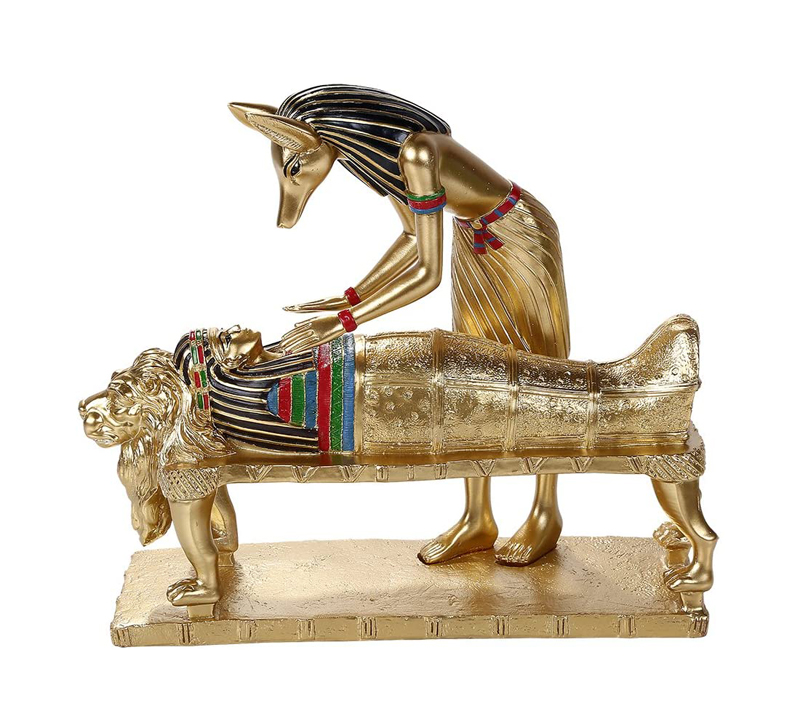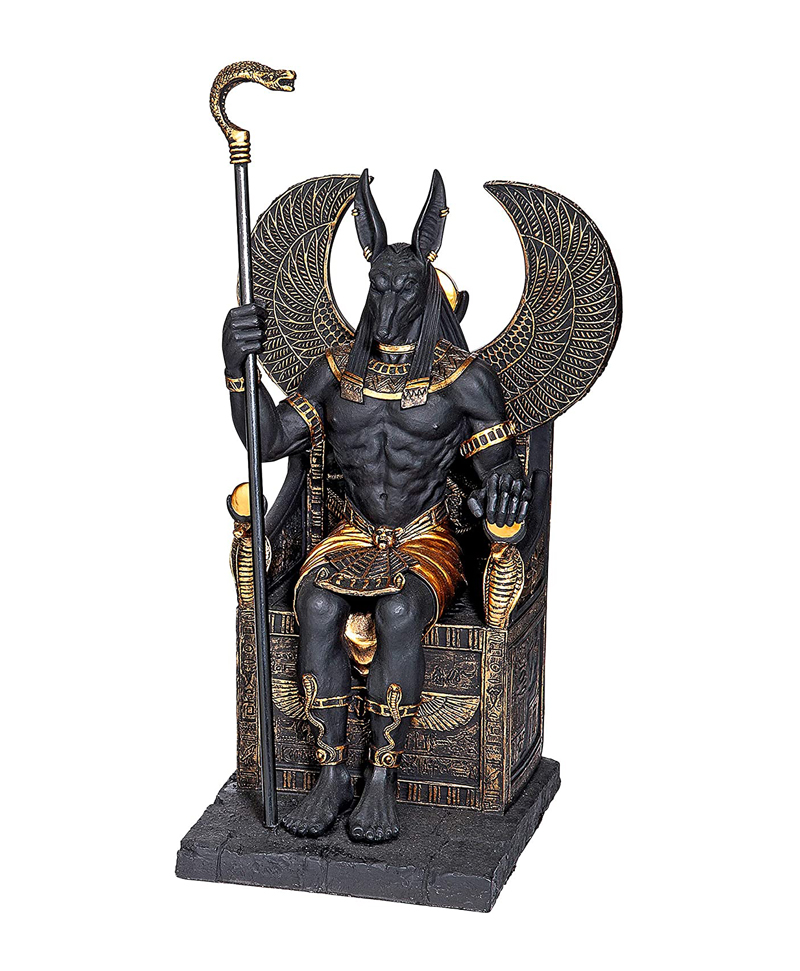Anubis Egyptian God of Underworld Mummification Statue
This Egyptian God Anubis Statue is made of designer composite resin, hand painted and polished. It depicts Anubis performing the mummification. Mummification is one of the defining customs in ancient Egyptian society for people today. The practice of preserving the human body is believed to be a quintessential feature of Egyptian life. Yet even mummification has a history of development and was accessible to different ranks of society in different ways during different periods. There were at least 3 different processes of mummification according to Herodotus. They range from “the most perfect” to the method employed by the “poorer classes“. The most expensive process was to preserve the body by dehydration and protect against pests, such as insects. Almost all of the actions Herodotus described serve 1 of these 2 functions. First, the brain was removed from the cranium through the nose, the gray matter was discarded. Modern mummy excavations have shown that instead of an iron hook inserted through the nose as Herodotus claims, a rod was used to liquefy the brain via the cranium, which then drained out the nose by gravity. The embalmers then rinsed the skull with certain drugs that mostly cleared any residue of brain tissue and also had the effect of killing bacteria. Next, the embalmers made an incision along the flank with a sharp blade fashioned from an Ethiopian stone and removed the contents of the abdomen.
Herodotus does not discuss the separate preservation of these organs and their placement either in special jars or back in the cavity, a process that was part of the most expensive embalming, according to archaeological evidence. The abdominal cavity was then rinsed with palm wine and an infusion of crushed, fragrant herbs and spices. The cavity was then filled with spices including myrrh, cassia, and, Herodotus notes, “every other sort of spice except frankincense“, also to preserve the person. The body was further dehydrated by placing it in natron, a naturally occurring salt, for 70 days. Herodotus insists that the body did not stay in the natron longer than 70 days. Any shorter time and the body is not completely dehydrated, any longer, and the body is too stiff to move into position for wrapping. The embalmers then wash the body again and wrapped it with linen bandages. The bandages were covered with a gum that modern research has shown is both waterproofing agent and an antimicrobial agent. At this point, the body was given back to the family. These “perfect” mummies were then placed in wooden cases that were human-shaped. Richer people placed these wooden cases in stone Sarcophagi that provided further protection. The family placed the Sarcophagus in the tomb upright against the wall, according to Herodotus. Anubis Egyptian God of Underworld Mummification Statue sizes: 8 inches / 20.5 cm x 8 inches / 20.5 cm x 3 inches / 7.5 cm.
Egyptian God Anubis Statue on Amazon.
Egyptian God Anubis Statue on eBay.
Egyptian Statues, Gods Statues and Mythological Statues.





You must be logged in to post a comment.